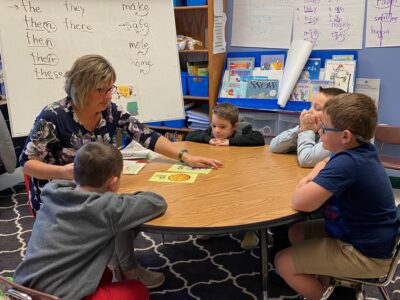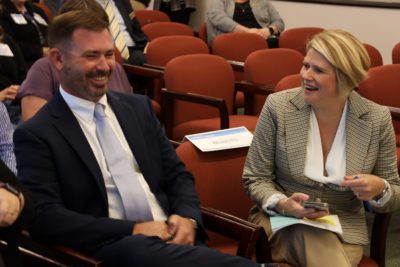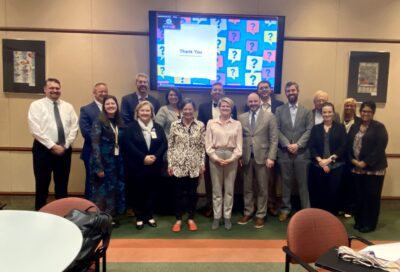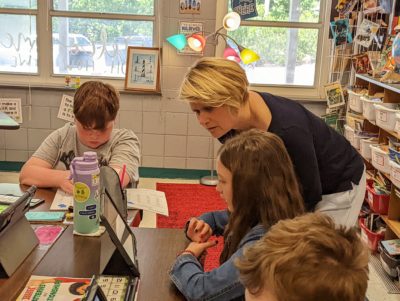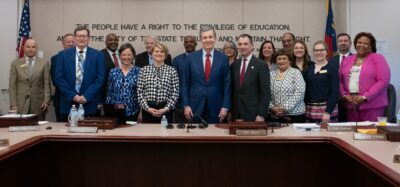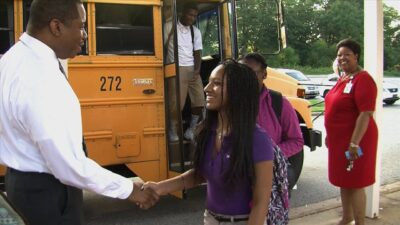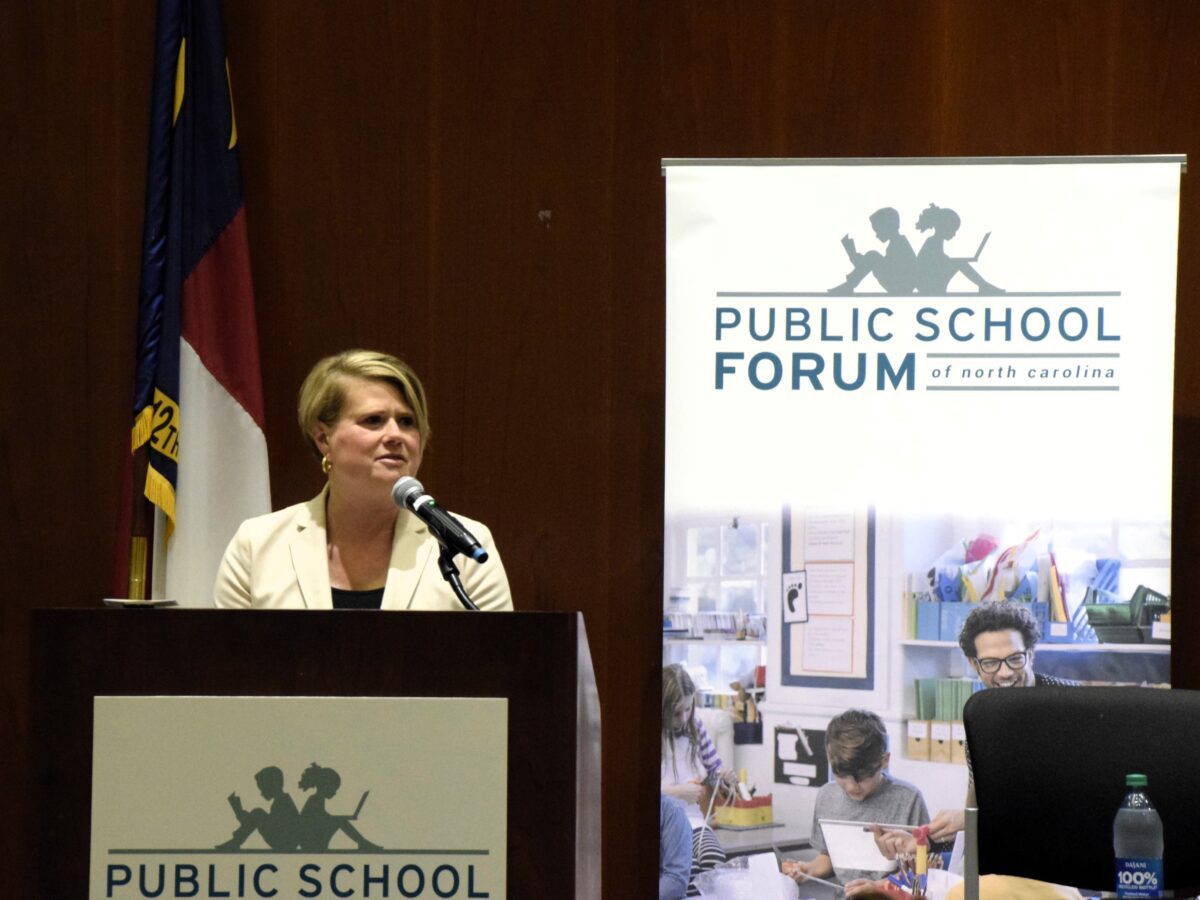
|
|
Superintendent of Public Instruction Catherine Truitt made these remarks at the Public School Forum for North Carolina’s Eggs & Issues convening on Tuesday, May 7, 2024.
Education has emerged as a contentious wedge issue in our political discourse.
Many Democrats and Republicans both are using education to appeal to their respective bases — framing campaigns and policies around buzzwords that inspire clicks and drive donations.
We’re at a critical juncture. There’s a big election ahead of us. The stakes are high because we are trying to recover from the most significant education event in our country’s history while the very nature of what it means to be workforce ready changes by the day. But as someone who has had the privilege of leading the state’s K-12 system for almost four years, I want to underscore the need for our education leaders to take their eyes off the buzzwords and hot topics that drive news and viral videos.
This will mean doing away with what “sounds good” in favor of doing good for students.
This is also what I want to challenge you all with today — that as we look to the future of public education in our state, we ask our leaders to share their vision outside of buzzwords and catch phrases — and instead share their data-driven plans for implementation and how that plan serves all students.
If we only ever ask education leaders about what their position is on the buzzwords, then we are missing so much. For example, if we only ask if they are against school choice, if they are for charter schools, if they are in favor of opportunity scholarships, if they support book banning, if they are against SEL (social-emotional learning), etc., then we miss the opportunity to hear about the larger plan, and vision, for education.
Buzzwords make for great soundbites, social media clicks, and attack ads. But education is much bigger — and significantly more nuanced — than 280 characters. Buzzwords don’t allow for leaders to articulate their plan or path forward. And their use shortchanges us on the opportunity to hear about whether leaders have a credible chance at executing a coherent, long-term vision.
A real and strategic roadmap requires tackling tough issues. It means tackling the issues that aren’t shiny; that aren’t easily understood. Sometimes it means tackling issues that aren’t easily explained; that aren’t popular; and confronting underlying policies that are grounded in decades-old legislation.
And, speaking from experience, some of the most consequential issues aren’t the topics that the media or news wants to cover. This type of work is harder in a lot of ways. But it’s also more rewarding.
What this looked like for my administration was addressing reading proficiency, workforce readiness, and accountability reform. These weren’t necessarily the sexy or preferred issues for either party — but they were the necessary issues.
Reading proficiency
When it came to reading, data pre-pandemic showed us that 67% of eighth graders started high school not reading proficiently, and 14% of African American eighth grades started high school reading proficiently. This is a civil rights crisis. This figure had not budged in many decades, regardless of the party in power and dollars spent.
In 2021, this meant working with the General Assembly to develop legislation that would provide foundational professional development to educators in evidence-based methods of literacy instruction. Providing LETRS professional development training for elementary teachers in North Carolina and implementing the principles of the science of reading, with fidelity — while unpopular coming out of the pandemic — has been the single most effective way that we have moved the needle on reading scores for early elementary students. It was a heavy lift for our teachers. But students of color have seen double-digit gains on K-3 reading benchmarks.
Data shows that the planning and intentionality is paying off. Not only have North Carolina’s kindergarten through third grade students’ reading assessments shown steady improvement since LETRS training commenced, they also outperformed the nation on reading benchmarks.
Workforce readiness
As for workforce readiness, we desperately needed to address the question: how are we preparing kids for their next steps?
High school graduation rates are not a proxy for postsecondary success. With only 1/3 of our high school students earning any kind of degree or workforce-aligned credential by age 24, aligning K-12 education to reflect the idea that all K-12 education is in service to some kind of job some day was a must for my administration.
The “college for all” mantra doesn’t resonate with many students, and we must help ALL reach their goals through robust career and technical education programs. Academics matter, but so does having a technically skilled and trained workforce that is prepared for the work of the 21st century.
To address workforce readiness, our agency created four statewide workforce goals. We also passed career development planning legislation. We added a computer science graduation requirement to ensure students are gaining hands-on experience in this quickly-growing discipline. We developed a Statewide Portrait of a Graduate outlining durable skills like adaptability, learner’s mindset, and personal responsibility to ensure we were equipping students with the in-demand skills needed upon graduation. We then rolled out grade specific resources free to teachers to help them implement these durable skills in classrooms daily.
Last year, our students earned the highest number of workforce-aligned credentials in state history.
Accountability reform
Finally, when I think about the work our agency prioritized, I think about our efforts to reform some of the systems that were holding us back. Coming first to mind is accountability reform. Students and teachers deserve a system that measures what matters. To do this meant we needed to address our accountability system to measure more than just how kids performed on high stakes one-and-done testing because while proficiency in reading and math are paramount, using student outcomes to apply a label of A, B, D, or F to schools does nothing to tell us what supports a school needs nor what they are doing right to help student succeed every day.
Our agency proudly began this work back in 2022 because we knew it was the right thing to do. This effort was about giving greater visibility into how schools were serving students and greater credibility to the work teachers were doing to prepare them, as well as shedding light on where schools need extra support.
Why a roadmap matters
I share the work we did and the progress we made on reading, readiness and reform to reiterate that we had a roadmap. It was called Operation Polaris, and it was designed to provide data-based decisions. It was designed to operationalize findings so that we could better target resources to support the state’s schools, students, and staff.
It wasn’t a wish list of how to spend money, but a strategic plan of how we were going to work to serve students and how we would use the data to drive better resource allocation rather than asking the legislature to write “fully fund” on a check.
This is the kind of strategy I hope you expect of current and future education leaders.
I hope you hold them to high standards.
I hope you expect them to do hard things.
To do the unpopular work.
To talk about the issues warranting attention outside of buzzwords like indoctrination, Leandro, CRT, social emotional learning, and fake kitty litter boxes.
I hope, instead, you ask them hard questions like:
- How will you navigate political pressures and widespread conflict among stakeholders to prioritize the best interest of students and the broader education community?
- How will you engage with parents, community members and others to build trust, gather input and foster collaborative decision making when many of these entities disagree with one another?
- If you are provided additional resources, do you have targeted plans to spend it in a way that will result in better outcomes for students?
I hope you ask future education leaders questions like:
- When was the last time you met with educators, a local superintendent, or a principal?
- Maybe most importantly: when was the last time you entrusted the North Carolina public school system with your child?
I hope you ask them about what their vision is, what their goals are, and how they will lead and inspire educators, administrators, and stakeholders to implement this vision effectively.
These types of discussions and questions are how we will begin to un-wedge education from the political football it has become. But it takes all of us to help move beyond complacency with buzzwords and soundbites so that we can begin asking better questions and receiving better answers.
Education is the great equalizer.
Education is a catalyst.
Education is a beautifully important and complex topic that enables and empowers students to be who and what they want to be.
It is so much bigger than what can be boiled down into a few talking points.
I hope we can rally behind education leaders who take the time to share their strategic plan — a roadmap that outlines a clear vision, discusses how resources will be used, how results will be monitored, how accountability and transparency are intertwined, how stakeholders are engaged and how sustainability can be maintained. I hope we can rally behind education leaders who take the time to show up and share their vision independent of buzzwords.
Our students deserve that. Our teachers and administrators deserve that. Let’s be sure we support the person who is going to help do that.
Thank you for having me today, and thank you for all you do to support students. I deeply appreciate your hard work and dedication to our profession and to North Carolina’s public schools.



